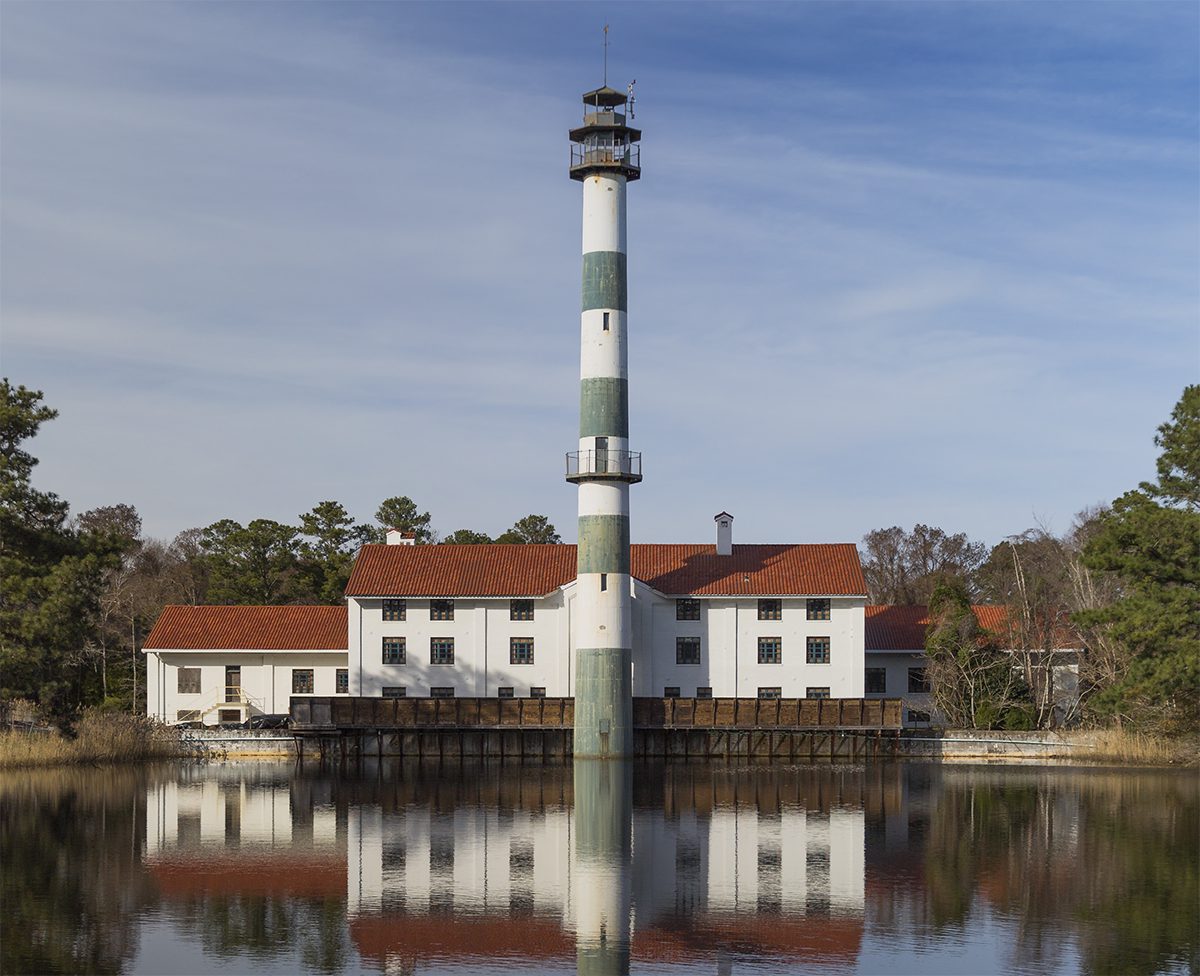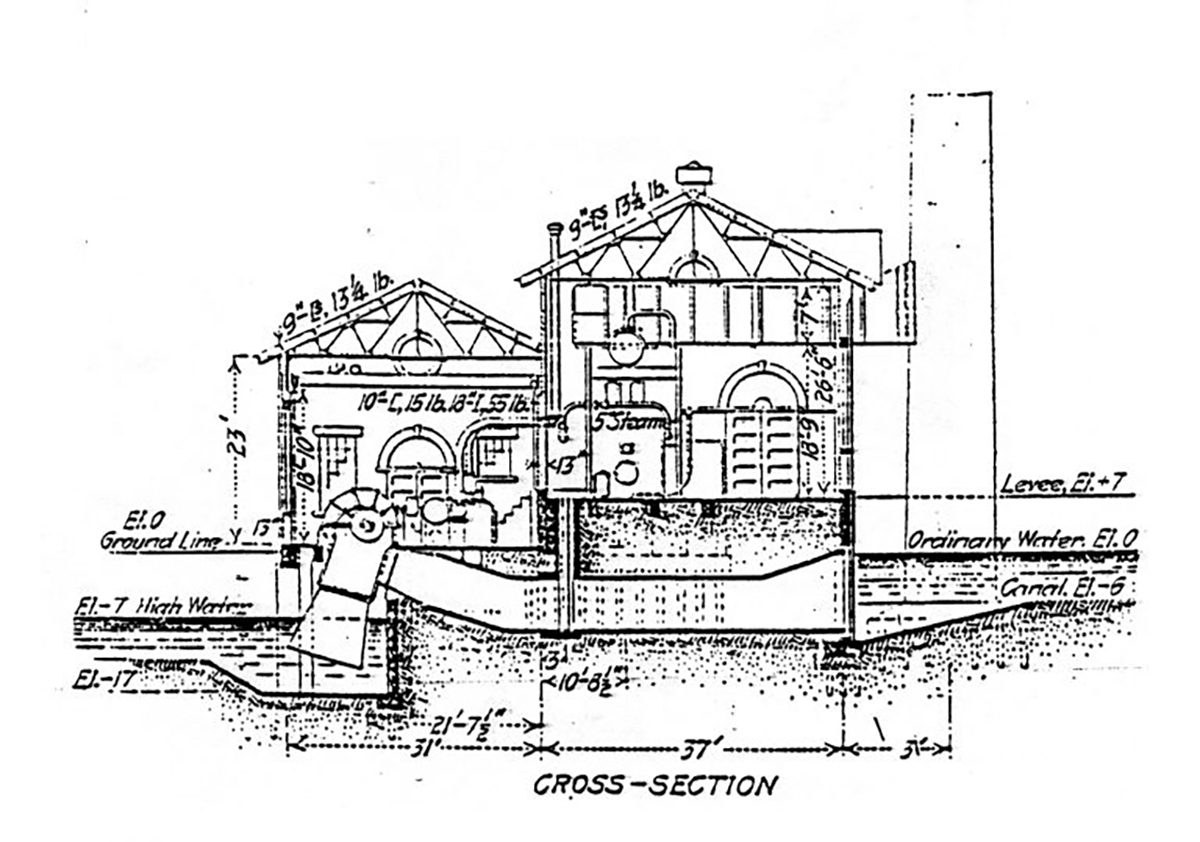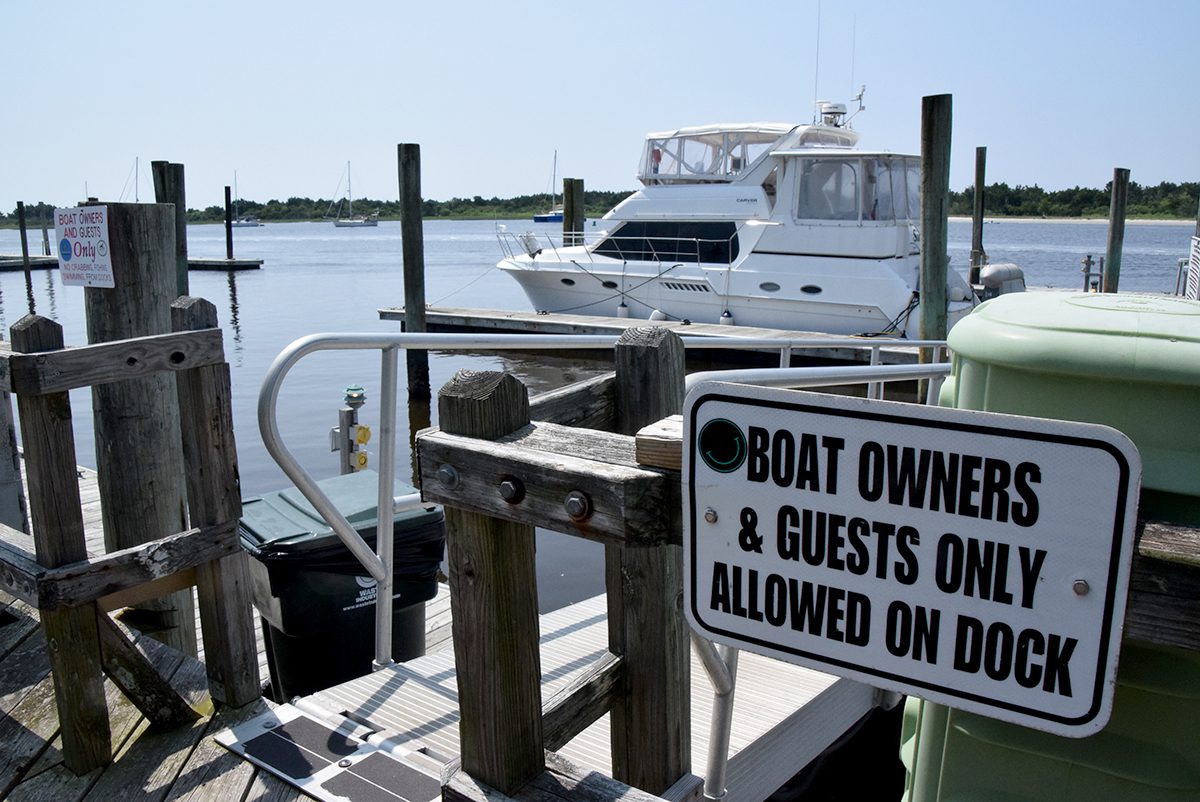
SWAN QUARTER — Nearly a quarter-century after historic Mattamuskeet Lodge shut its doors, an enterprising new plan is underway to reopen a reimagined version of Hyde County’s community gathering spot.
Efforts in the last 16 years to determine a sustainable plan to operate the 109-year-old state-owned lodge have confounded the county, despite assistance from nonprofits, private businesses and model business plans created at two state universities.
Supporter Spotlight
“We’ve been trying to crack the code for so long to find how we can open it and how it can be sustainable,” Hyde County Manager Kris Noble told Coastal Review late last week.
As it turns out, the answer to reviving Mattamuskeet Lodge was right under her nose — or more accurately, in the same government center building where she works: the Hyde County Cooperative Extension.
When Noble took a closer look at the University of North Carolina’s and East Carolina University’s respective business plans, it became apparent that what was missing was economies of scale.
“I started realizing that the number one issue of being sustainable was really the staff cost to operate the facility,” she said. “I started brainstorming, and I came up with this idea that we would house Hyde County’s Cooperative Extension agency within the lodge, and they will operate the lodge.”
Not only could the Cooperative Extension readily relocate to the lodge that’s about 10 miles away, Noble said it would be a perfect fit with its model. The extension provides rural community support, services and programming that is focused on the same inherent features as Mattamuskeet Lodge: agriculture, fishing, hunting, history, water and the natural environment.
Supporter Spotlight
The North Carolina Cooperative Extension is a state agency, and county cooperative extensions are partnerships with the state. Operating framework and procedures come from the state, but program costs for the counties are split with the state.
Hyde’s Cooperative Extension is enthusiastically onboard with the move to the lodge, Noble said.
With the go-ahead from all stakeholders, the county led development of the proposed restoration plan, and presented it to state lawmakers. In early January, the Council of State agreed to lease the building for 30 years to the county for $1. The North Carolina Wildlife Resources Commission would continue to oversee the site and partner with the county. A new nonprofit partner, the Mattamuskeet Lodge Society, has been created to support the restoration and develop public awareness of the lodge’s natural and cultural heritage.
Meanwhile, the county is in the process of reviewing a draft lease from the state, Noble said. Once that is finalized, $6.5 million in state funds are in hand for Phase I of the restoration, with the goal of transforming the lodge into an educational and event center, with a museum and gift shop on the ground level.
“And after we complete that design and engineering, we’ll be able to provide a better cost estimate for completion of the entire project and a better timeline,” Noble said.
What is already known, she added, is that the 14 bedrooms available in the past are not going to be part of the building’s future.
“There will not be lodging in the lodge,” Noble said.
According to the plan, “The Mattamuskeet Lodge, proposed restoration initiative,” the project’s final phase is estimated to cost $14.4 million and include installation of electrical, mechanical and wastewater systems, as well as landscaping and parking improvements. Furnishings, fixtures, and equipment are estimated to cost an additional $2.15 million.
While recognizable statewide thanks to an iconic photograph often used in North Carolina tourism brochures, Mattamuskeet Lodge never has been a major visitor attraction. Still, its cultural and historic value makes it a significant asset to the state, and a cherished place in the rural community.
“The Lodge will be the center of Hyde County’s natural heritage celebration, highlighting over 400 years of history as well as the living natural heritage,” the plan said.
“Local farmers, commercial fishermen, wildlife guides, Civil Rights and Native American experts, and artists will keep this natural heritage alive through their use of the Lodge.”

An engineering feat
Located within the 50,000-acre Mattamuskeet National Wildlife Refuge, the lodge was originally built in 1915 as a pumping station to drain Lake Mattamuskeet, the state’s largest natural lake, to use its richly organic bed as farmland. At the time, the facility was acclaimed as an engineering feat and the world’s largest pumping station. Despite its razzle-dazzle, the operation was unsuccessful and eventually abandoned.
Ownership of the 40,000-acre lake and the three-story pumphouse were eventually transferred to the federal government, which in 1934 established the refuge to protect migratory wildfowl and the lake’s environment.
The refuge and the Civil Conservation Corps remodeled the nearly 15,000-square-foot pumphouse into a 38-room hunting lodge and refuge headquarters, according to Mattamuskeet Lodge’s 1980 listing on the National Register of Historic Places. The plant’s tall chimney, the listing said, was transformed into a 120-foot observation tower with a stairway.
Opened in 1937, the hunting lodge operated until 1974. But the building was still used for numerous special community events, local weddings and school proms until it was closed in 2000 because of structural concerns.
By 2006, the lodge was in disrepair, and the federal government handed it and its 6.25-acre footprint over to the state Department of Cultural Resources with the idea that the agency would be able to restore and renovate the lodge.
Between 2008 and 2010, $5.7 million was appropriated for projects that included demolition and removal of hazardous materials, replacement of concrete and waterproofing on the lower level, installation of new steel building columns, replacement of windows, repair and re-coating of the exterior, augmenting floor joists and installation of additional wind-bracing components.
In 2016, the lodge was transferred, as planned, to the Wildlife Resources Commission. Four years later, a $300,000 roof restoration was completed, including removal of all the original clay tiles, partial replacement of the wood decking, installation of a water shield, and replacement of the tiles.
Currently, repair and restoration of the 100-year-old observation tower, originally the smokestack on the coal-fired pumphouse, is being planned, with funding from a $1 million appropriation in 2022.

“That observation cab on top has a lot of corrosion,” said Brad Kleinmaier, capital projects coordinator with the Wildlife Resources Commission. Windows have also been damaged.
“We will reinforce the tower so it’s more wind-resistant,” Kleinmaier said.
While the two university studies and discussions of possible public-private partnerships couldn’t make the operation’s math work, the new plan solved the elusive sustainability equation by tapping existing budgets and resources to cover costs. It also added various new pots of money, including profits from the gift shop.
“The business model incorporates county in-kind contributions supported by revenue generated by county programs and … event rentals, programs, shop sales, and fundraisers to fund operational expenses and program expansion,” ad detailed in the plan. “Additional revenue is anticipated through philanthropy and grants earmarked for the preservation and operation of National Historic Sites.”
Once the renovated lodge is reopened, it’s expected to add $8 million to $24 million annually to the Hyde County, the plan said.
Although Lake Mattamuskeet has suffered from water quality issues in recent years, scientists are in the process of implementing a comprehensive restoration plan at the lake. But the lake and its surrounding landscape have maintained its serene magic and unique natural beauty. The refuge is home to large populations of black bear and deer, thousands of waterfowl and other wildlife.
Proposed cooperative extension programming at the lodge, such as storytelling, art classes, and local displays on farming and history, and potential Wildlife Resources Commission educational programs involving hunting, fishing and conservation, could dovetail with refuge activities such as kayaking, hiking, bicycling and birdwatching.
To Noble, a Hyde County native, restoration of the lodge will not only restore what was the beloved centerpiece of community life, it will also reinvigorate the rural county.
“We want this to enhance and promote all of our local businesses,” she said.
With a population of 4,589, according to the 2020 census, Hyde County is second least populated and one of the poorest of North Carolina’s 100 counties.
“Of course, our number one goal is to restore and reopen the lodge,” Noble said.
“Our very strong secondary goal was the economic stimulus that this will create for our communities.”







